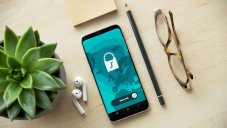Ooty-Based Indian Lab Succeeded Measuring The Most Powerful Thunderstorm
Harin - Mar 24, 2019

Ooty-based Cosmic Ray Laboratory announced its phenomenal discovery on the production of an unimaginably high voltage in a thunderstorm.
- Delhi Is The World’s Most Polluted Capital City For Three Years In A Row
- Indian Farmers Install High-Tech, Night-Vision CCTV Cameras To Protect Themselves
- Looking For The Best Electric Bike In India 2021? Take A Look At These
Some people are often scared of being trapped in a thunderstorm, with the air flowing with energy that could potentially fry you. We have always known that they produce free neutrons, gamma rays, and other things, but we do not actually know how they produce these matters, until now.
A team consists of Indian and Japanese researchers has been carried out research on thunderstorms. Now, with the assistance and leading of the Cosmic Ray Laboratory (CRL) from the Tata Insititute Fundamental Research in Ooty, they have achieved a breakthrough.
A telescope named GRAPES-3 has been used for the measurement of microscopic particles floating in the air. Muons are a kind of particles that are similar to the positron and electron but heavier. They are created when the atmosphere is hit by gamma rays.

The researchers detected that every time that a thunderstorm appeared, the readings of their telescope would become distorted. So they decided to look into this phenomenon by setting up electric field monitors at several distances surrounding the observatory. By doing this, the intensity of the electric field that passed overhead at each location could be measured.
Most of the time, these storms produced a lot of complicated data. However, in Dec 2014, a huge storm having a slightly simpler electric charge distribution appeared. Taking this as an opportunity, the team utilized their data to measure the thunderstorm’s electric potential.
A storm’s electric potential is the amount of work required to transfer its electrons from this part of a cloud to another. Due to thunderstorms’ inherent electrical activity, they cause muons to lose energy, which makes it challenging for muon detectors to assess them.

The researchers succeeded in pinpointing the electrical potential of the storm by observing the muons’ changing detection levels and comparing it with the electrical activity happening outside.
The result from the team’s simulator suggested that the potential of the 2014 storm is at a 1.3 billion Volts. To better understand how big this number is, in the previous record, which was measured with a weather balloon, was at 0.13 GV, around ten times smaller.
It is still uncertain whether this discovery can be used without muons detection. Even if it is not possible, it is still a remarkable achievement for an Indian lab to unfold the mysteries hidden in the thunderclouds.
Featured Stories

Features - Jul 01, 2025
What Are The Fastest Passenger Vehicles Ever Created?

Features - Jun 25, 2025
Japan Hydrogen Breakthrough: Scientists Crack the Clean Energy Code with...

ICT News - Jun 25, 2025
AI Intimidation Tactics: CEOs Turn Flawed Technology Into Employee Fear Machine

Review - Jun 25, 2025
Windows 11 Problems: Is Microsoft's "Best" OS Actually Getting Worse?

Features - Jun 22, 2025
Telegram Founder Pavel Durov Plans to Split $14 Billion Fortune Among 106 Children

ICT News - Jun 22, 2025
Neuralink Telepathy Chip Enables Quadriplegic Rob Greiner to Control Games with...

Features - Jun 21, 2025
This Over $100 Bottle Has Nothing But Fresh Air Inside

Features - Jun 18, 2025
Best Mobile VPN Apps for Gaming 2025: Complete Guide

Features - Jun 18, 2025
A Math Formula Tells Us How Long Everything Will Live

Features - Jun 16, 2025
Comments
Sort by Newest | Popular